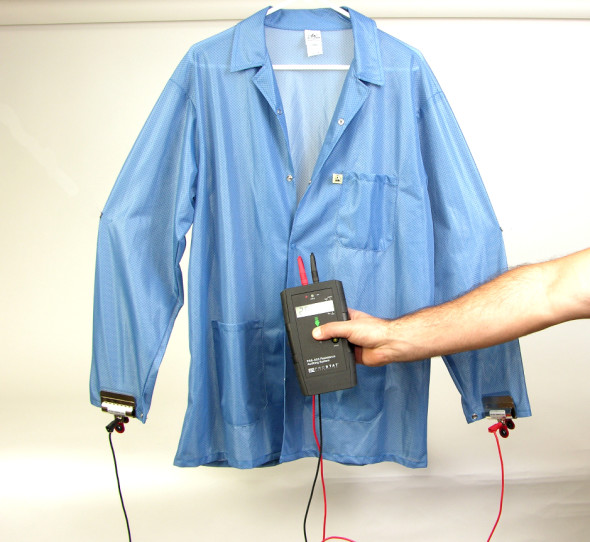Can you measure cloth samples using a concentric ring with an electrode in surface resistance mode?
The challenge of measuring fabrics is that it is not a solid and smooth surface, like sheet metal or plastic films, but rather a surface with lots of texture, meaning less surface area and dispersed discrete contact points. The cloth materials can range from a textured continuous surface to mesh-like with lots of repeated holes, mostly air.
So what is the correct method for measuring the resistance on a sample of cloth?
First, let’s take into account what the Prostat PRF-911 Concentric Ring is actually accomplishing. This was originally developed to test in accordance to STM11.11 for Surface Resistance measurement of planar materials. The standard STM11.11 states that this method of testing is not intended for testing electrically conductive or insulative materials, but rather qualifying the static dissipative range of planar materials. Most commonly this is used for qualifying ESD safe packaging material. With this being said, the PRF-911 is testing the area between the inner electrode and outer ring for resistance, and would not be the best way to qualify your conductive clothing materials (as this is not the intention of the PRF-911 in accordance to STM11.11)
Depending on the size of the sample of cloth you are testing, and if you were to test in accordance to STM2.1 Electrostatic Discharge Susceptible Items – Garments… you would need to test the resistance across your material, and not simply the surface. There are multiple methods of accomplishing this, most simply a point to point (PtP) measurement. Size here matters, as you could take PtP with 5lb conductive rubber electrodes (larger items), or if your sample is small you may wish to use either garment clips or a smaller two point probe (PRF-922B). With the smaller two point probe, you would have the ability to troubleshoot specific segments or stitching areas of the cloth as irregularities in the fabric may occur.
Please take into account that since you are measuring across the material and it is porous, you have to insure that you have a highly insulative material or testing bed underneath the cloth to not interfere with the PtP measurement. Taking the readings in the Ohms mode (not exponential) would also be beneficial as your readings for conductive materials will be below E3 and you may require higher resolution for comparison of your measurements.


Recent Comments